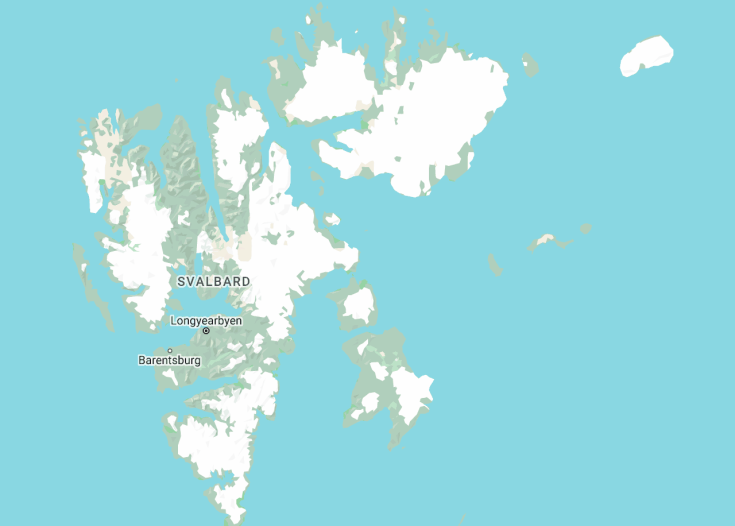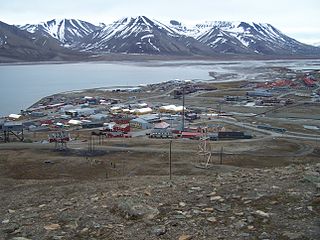Located in the Arctic Ocean, Svalbard is a remote Norwegian archipelago offering breathtaking glaciers, deep fjords, and endless polar nights. Its stark beauty is home to polar bears, Arctic foxes, and diverse seabirds. As one ventures through this untouched wilderness, the sense of being in a pristine, uncharted world is undeniable. A destination less traveled, Svalbard is the epitome of Arctic exploration for the intrepid traveler.
Travelers are advised to dress warmly in layered clothing, even during summer, due to Svalbard’s chilly Arctic climate.
For safety, always opt for guided tours, especially since polar bears can be a potential threat in uninhabited areas.
Top destinations in Svalbard (Norway)
Svalbard: A Pristine Arctic Wilderness
| Capital | Longyearbyen |
| Time in Svalbard | GMT+01:00 |
| Language spoken | Norwegian |
| Population | 2,665 (source: World Bank) |
| Religion | Christianity (95%) Other Religions (5%) |
| Currency | Norwegian Krone (NOK) |
| Airports | Svalbard Airport, Longyear Svalbard Airport, Ny-Ålesund |
Svalbard: A Pristine Arctic Wilderness
Where is Svalbard located?
Svalbard is an archipelago located in the Arctic Ocean, about midway between mainland Norway and the North Pole. It is situated north of mainland Europe and consists of several islands, the largest of which is Spitsbergen.
What is Svalbard famous for?
Svalbard is famous for its stunning natural landscapes and unique wildlife. It is home to majestic glaciers, frozen fjords, and snow-capped mountains. The archipelago is also known for its polar bears, which roam freely in their natural habitat. Visitors to Svalbard can experience the beauty of the Arctic wilderness and explore its remote and untouched areas.
History
1194-1500: Early Discoveries
Svalbard, known for its icy landscapes, was believed to have been first discovered by the Vikings in the late 12th century, as mentioned in historical texts. However, for centuries, the archipelago remained a shadowy place on the fringes of known European maps, spoken of in tales but not yet fully explored.
1500-1600: Whalers and Explorers
The true exploration of Svalbard began in the 16th century. By the end of the 1500s, whalers from the Netherlands, Russia, and England ventured north, drawn by the abundance of bowhead whales. These whalers established temporary seasonal settlements, which became some of the archipelago’s first human habitations.
1600-1800: Competing Nations and Scientific Exploration
As whaling activities intensified, so did international disputes over territorial rights. Despite the challenges, Svalbard became an important base for Arctic exploration. Scientists, especially from Norway and Russia, started setting up research stations, exploring the islands’ geology, flora, fauna, and studying the enigmatic Arctic conditions.
1800-1900: The Coal Rush
In the 19th century, coal deposits were discovered in Svalbard. This led to an influx of miners and the establishment of permanent settlements. Longyearbyen, which started as a coal mining town, grew rapidly. Svalbard’s economic landscape began to shift from whaling to mining, drawing interests from countries including the US, UK, and Russia.
1900-Present: Treaty, Research, and Tourism
Following territorial disputes and recognizing the strategic importance of the archipelago, the Svalbard Treaty was signed in 1920, granting Norway sovereignty while allowing other signatories rights to economic activities. With mining activities reducing in the late 20th century, scientific research and tourism have become the mainstays of Svalbard’s economy. The archipelago is now home to a diverse international community and boasts a range of research institutions and the world’s northernmost university. In recent years, the impacts of climate change on its fragile ecosystem have made it a focal point for environmental research and a destination for eco-tourists worldwide.
Visit Svalbard
What to see and do in Svalbard.
Svalbard offers a range of exciting activities and attractions for visitors to explore:
- Take a boat tour to witness the majestic glaciers and ice formations.
- Visit the Svalbard Global Seed Vault, a secure facility that preserves the world’s crop diversity.
- Go on a wildlife safari to spot polar bears, Arctic foxes, and reindeer.
- Explore the Russian mining town of Barentsburg and learn about its history.
- Experience the unique Arctic silence and take in the breathtaking landscapes.
Annual events in Svalbard.
Svalbard hosts various events throughout the year, each offering a unique experience:
- The Arctic Race of Norway, a prestigious cycling race held in August, showcasing the island’s rugged beauty.
- The Polarjazz festival in February, featuring jazz performances in extraordinary locations.
- The Solfestuka (Sun Festival) in March, celebrating the return of the sun after the polar night.
These events provide opportunities for visitors to engage with the local community and immerse themselves in the Arctic culture.
Best time to visit Svalbard
The best time to visit Svalbard depends on personal preferences and interests. The summer months of June to August offer milder temperatures, with the possibility of witnessing the midnight sun and engaging in outdoor activities such as hiking and wildlife spotting. The winter months from November to February provide a chance to experience the polar night and possibly catch a glimpse of the mesmerizing Northern Lights. It is important to note that the weather in Svalbard can be unpredictable, so it’s essential to come prepared with appropriate clothing and gear.
Is Svalbard worth visiting?
Svalbard is definitely worth a visit for those seeking unique and remote Arctic experiences. The archipelago offers breathtaking landscapes, the opportunity to observe fascinating wildlife in their natural habitat, and the chance to immerse oneself in the captivating Arctic culture. However, it is important to note that Svalbard is not your typical tourist destination. The remote location, harsh climate, and limited infrastructure may not appeal to everyone. Additionally, Svalbard’s attractions are primarily focused on nature and wildlife, so those seeking a bustling city or traditional cultural experiences may find other destinations more suitable. Nonetheless, for adventurers and nature enthusiasts, Svalbard is an extraordinary destination waiting to be explored.
Common questions
What are the best things to do in Svalbard?
- Taking a boat tour to admire the stunning glaciers and fjords
- Exploring the unique wildlife, including polar bears, reindeer, and Arctic foxes
- Visiting the abandoned Russian mining town of Pyramiden
- Experiencing the thrill of dog sledding through the Arctic wilderness
- Exploring ice caves and witnessing the fascinating blue ice formations











